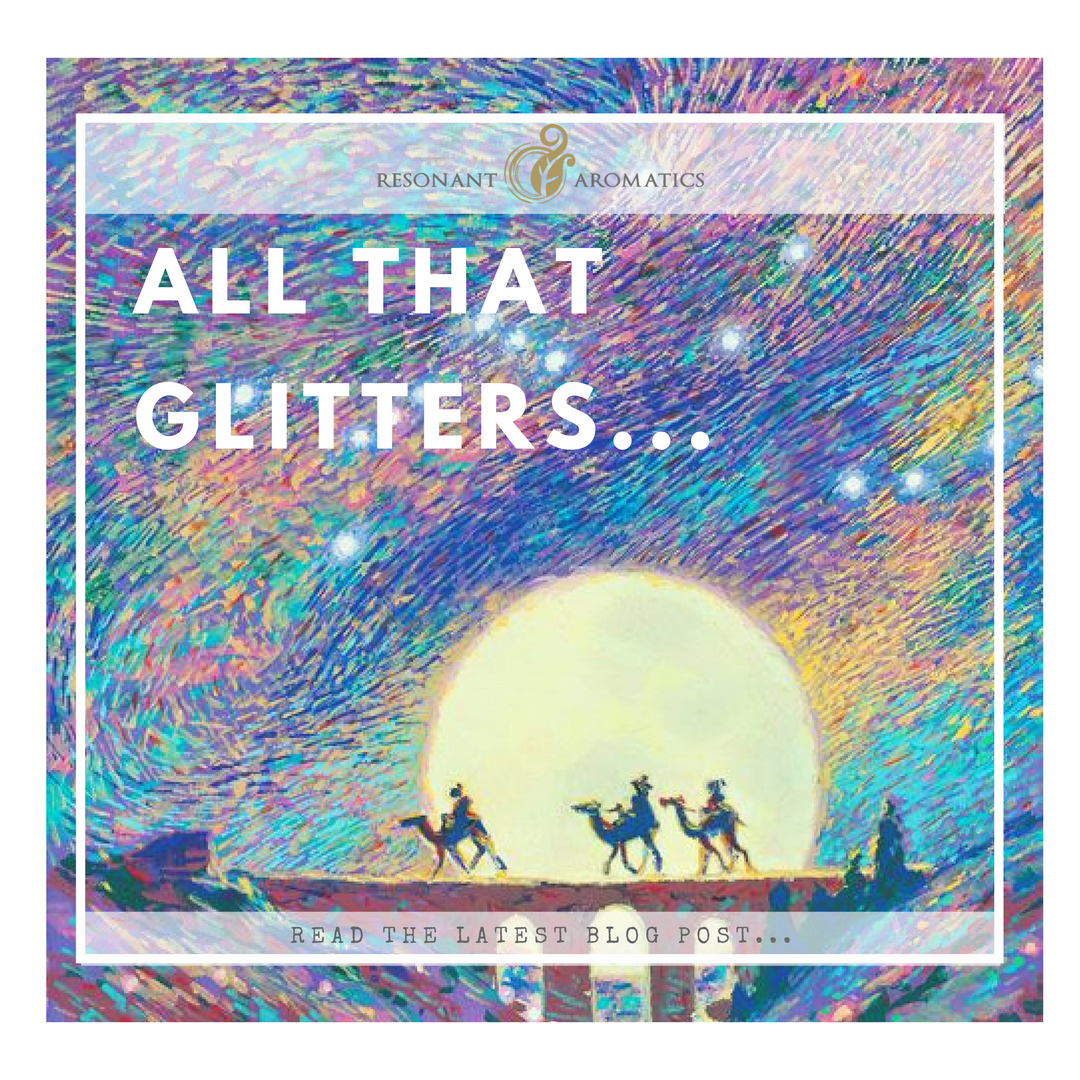
“… and when they had opened their treasures, they presented unto him gifts; gold, and frankincense, and myrrh” (Matthew 2:11)
Everyone knows the bible story of the three wise men bringing gold, frankincense, and myrrh, but what is it really about?
Most biblical historians interpret the three gifts as: ‘gold’ – the precious metal and symbol of divinity in ancient times, ‘frankincense’ – the resin incense burned in antiquity during prayer and worship, and ‘myrrh’ – the anointing oil used medicinally and also for embalming (in the bible, myrrh oil was given to Jesus to drink before crucifixion and was also taken to anoint his body after death).
Although most sources agree on this interpretation, some scholars believe the ‘gold’ may refer to a less well-known resin from North-Western Africa with a rich gold colour. This resin is known as Sandarac. Also referred to as Sandarach, Sandarus and Sandalus, Sandarac takes its name from an Assyrian word meaning “as bright as the moon”. Due to it’s semi-translucent, golden appearance, the greek philosopher Aristotle believed it was made by bees!
In ancient Arabia, Northern Africa and the Mediterranean, exotic resins were highly valued. Used in incense, medicine and perfume, it was custom for the wealthy to offer precious resins as gifts and these were often worth more than their weight in gold. Certainly, the frankincense and myrrh given by the magi to Jesus would have cost far more than gold of the same weight!
The Babylonians, Assyrians and ancient Egyptians sourced enormous amounts of resins via the ‘Incense Road’: a network of land (and later – sea) trading routes that connected them with the Mediterranean, North-Eastern Africa, the Arabian Peninsula and India. This route was renowned for the transport of luxury goods: incense, spices, gems, pearls, ebony, ivory, silk, rare woods, feathers, animal skins and gold. In the earliest days of its existence, the journey was made by Arab tribes travelling via camel caravan (up to 150 camels in each caravan): transporting incense from southern Arabia to the civilisations scattered around the Mediterranean Sea. The towns or kingdoms that the convoys passed through quickly seized the opportunity to inflict heavy taxes on the merchants, who would switch routes accordingly to avoid them. This and the frequent sandstorms meant the route was often in flux: changing dependent on conditions. It is thought that at its height, the Incense Road saw over three thousand tons of incense transported each year by thousands of camels and camel drivers. Although traders stood to make a huge profit, the risk of attack by thieves, sickness and even death made it a very dangerous occupation.
Sandarac resin gathered from the Aratree (also known as Avar tree) would have been traded along this route: sourced mainly from the Atlas Mountains region of Morocco in North Africa, where it was a well-known folk medicine. Sandarac resin was burned to cure colds and taken internally to treat parasites. Its warm balsamic fragrance is thought to relax and calm the body, soul and mind. These attributes mean it can be useful in treating insomnia caused by tension or stress. Sandarac is believed to have cleansing, strengthening and clarifying properties.
The healing properties and reverence for tree resins that we find in the bible is beginning to be increasingly taken up by modern medicine. Frankincense is being explored as a treatment for cancer, Crohn’s disease, anxiety, depression and asthma among many other conditions. It is recognised to act as a fumigant: removing toxins from the air (one reason why resins were burned so frequently in ancient civilisations!). The chewing of a softer frankincense resin (Boswellia Frereana), a common practice in parts of Africa and the Middle East, is known to reduce bacteria in the mouth, throat and gut. Myrrh is being used to improve digestion and circulation, to boost the immune system, treat coughs, gum disease (we often find it in natural toothpastes), wounds, candida and some skin diseases.
It is wonderful to see the current revival of the use of frankincense and myrrh across Western medicine, traditional Chinese medicine, Ayurveda and aromatherapy. Perhaps the ‘gold’ the three wise men brought as a gift gives us a clue to another potent healer: Sandarac resin.


